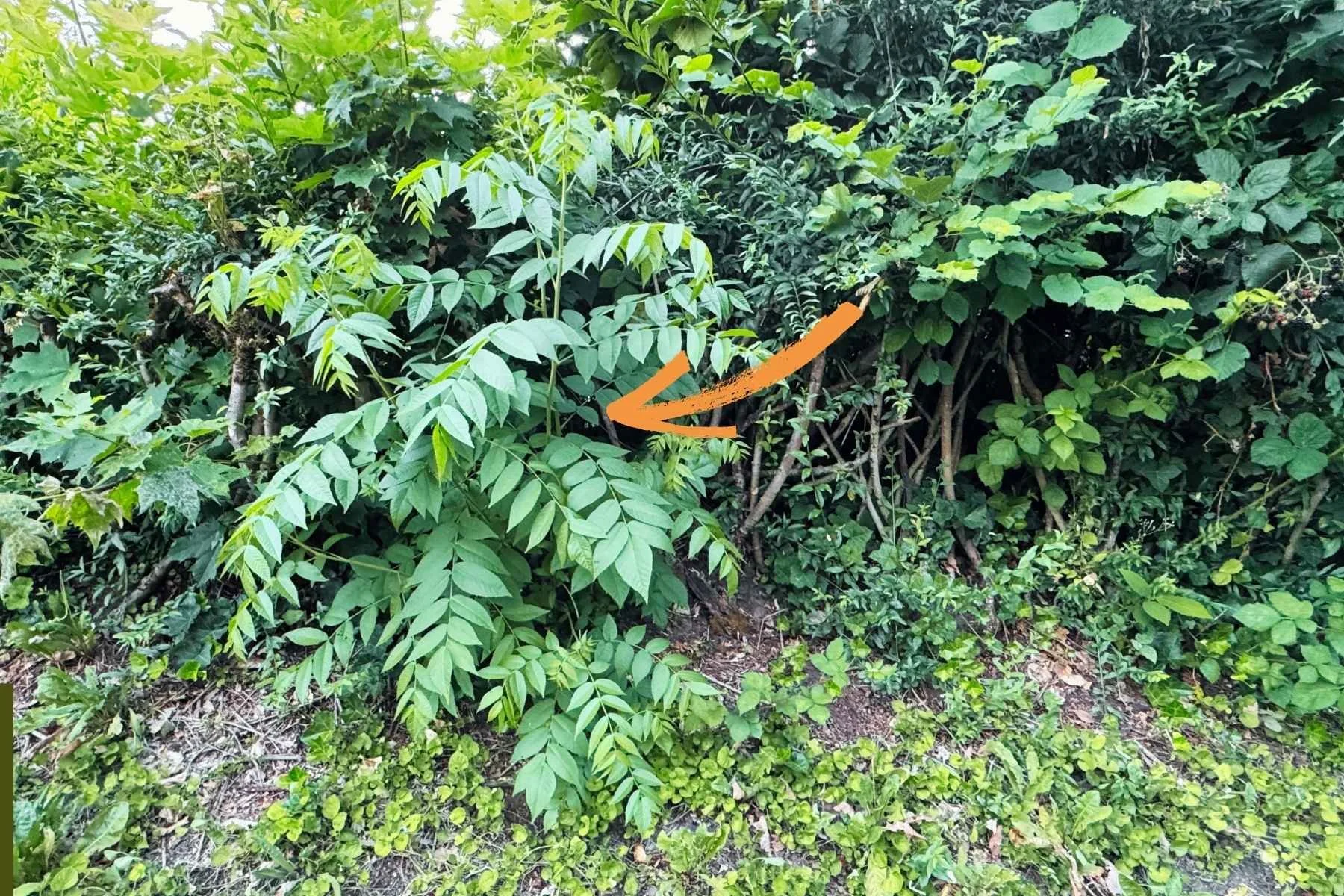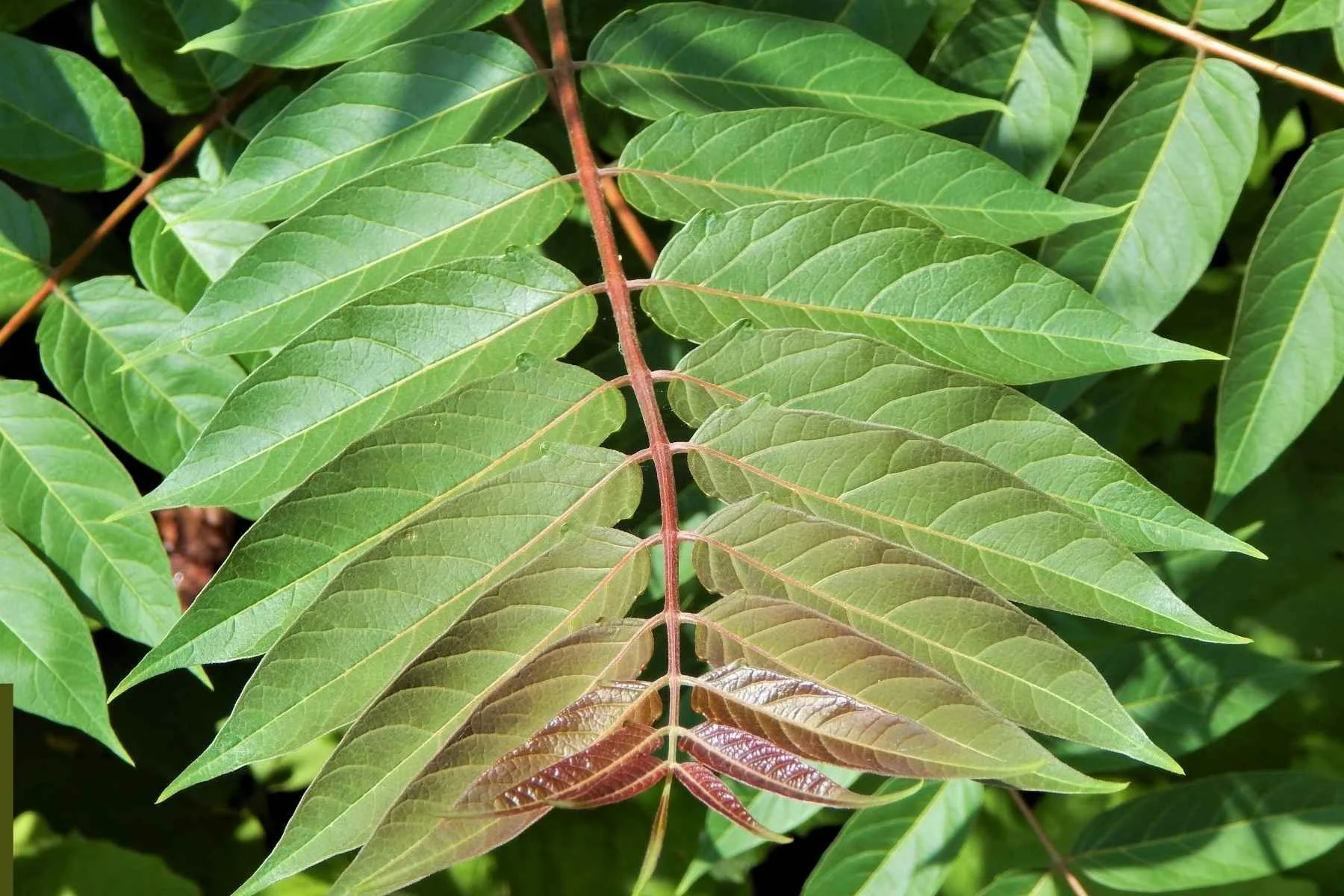How to Get Rid of Tree of Heaven (Without Losing Your Mind)
First: Whatever You Do, Don’t Cut It Down Cold Turkey
Here’s the thing: cutting down a Tree of Heaven without any prep is like poking a hornet’s nest. The tree responds to stress by sending out a massive network of root suckers—so you’ll go from one tree to 20 in no time. Not ideal.
Instead, the most effective method is to treat it first, then remove it. That way, you take out the root system and avoid the sprout explosion.
I first met a Tree of Heaven more than 25 years ago—back when I didn’t know better. It had quietly sprouted near the west end of my porch and had grown to about 10 feet tall. Honestly, I kind of liked it. It offered dappled shade in the afternoon, and I thought it gave a nice wild touch to the edge of the yard.
But one day, a landscaper stopped by and spotted it. His reaction was immediate: “Oh no, no, no—I’ll even take this out for free.” He went on to explain that this tree, with a name that sounds almost poetic, is actually one of the most invasive and aggressive plants you can have near your home. That was the beginning of my education in just how deceptive the Tree of Heaven can be.
Since then, I’ve been on high alert in my own garden—removing saplings when I find them, and sometimes even managing to pull them out by the roots. But I’ve learned the hard way: this plant doesn’t go quietly. If you cut it down or pull it without a plan, it fights back. It sends out root suckers—sometimes dozens—like a hydra growing new heads. It wants to survive, and it’s not subtle about it.
So now, when I see one sprouting in a friend’s yard—or tucked into a city sidewalk strip—I feel a little duty-bound to say something (gently, of course). In fact, I don’t think I’ve walked a single block in Portland without spotting at least one hiding in plain sight.
Our Favorite Technique: The “Hack and Squirt”
We know. It sounds intense. But it works—and it’s widely recommended by invasive plant specialists and arborists.
When to do it:
Late summer to early fall is best. This is when the tree draws nutrients (and herbicide) down into its roots.
What you’ll need:
A hatchet or machete
Glyphosate (41% concentrate) or Triclopyr (like Garlon 4)
A squirt bottle labeled for herbicide use
Protective gloves and goggles
How it works:
Make deep hacks around the base of the trunk, every 2–3 inches. You’re aiming for the cambium layer—just under the bark.
Immediately squirt herbicide into each cut. Don’t overdo it—a good squirt per cut is enough.
Let the tree stand for a few weeks. This gives the herbicide time to travel through the system and kill it at the roots.
After it’s good and dead, you can cut it down without triggering a root revolt.
Got Saplings? Here's What to Do
For younger trees or saplings, try this approach:
Cut the stem as close to the ground as you can.
Within 30 minutes, apply herbicide to the outer edge (the cambium ring) of the stump.
Watch for any regrowth. If it sprouts, treat again.
This works best on trees under 6 inches in diameter.
The Long Game: Monitor and Re-Treat
Tree of Heaven has serious survival instincts. Even after initial treatment, it might send up new shoots from its roots or stump. That’s normal—but stay on it.
Check regularly for suckers and sprouts.
Apply spot herbicide treatment as needed.
Repeat for 2–3 years to fully eradicate it.
It’s not a one-and-done deal. But with persistence, you’ll win.
Don’t Do This (Seriously)
Don’t burn or compost the plant. You could accidentally spread seeds or root fragments.
Don’t skip herbicide unless you’re fully committed to years of manual root removal.
Don’t ignore resprouts. Treat them early before they get out of hand.
Finish Strong: Replant With Purpose
Once your garden is free of Tree of Heaven, why not fill that space with something beautiful and beneficial?
Some of our favorite Pacific Northwest native trees include:
Pacific dogwood – lovely spring flowers and great for pollinators
Oregon white oak – a stately, slow-growing native that supports wildlife
Bigleaf maple – classic canopy and golden fall color
They’ll bring structure and shade—without the invasive drama.
Need Help?
If you're local to Portland and need help identifying or planning around invasive plants, there are some great resources out there like the Oregon Invasive Species Council or Portland’s Urban Forestry division. And if you’re thinking about selling your home and wondering how your landscape affects curb appeal—we’re always happy to give input.
Reach out if you're curious how garden health and home value go hand-in-hand!
From Garden to Home, We’ve Got You Covered
We’re Kim Campbell and Francisco Salgado—local real estate pros, longtime homeowners, and passionate gardeners living right here in Sellwood-Moreland. Whether you’re tackling invasive plants or planning your next big move, we’re always happy to share what we’ve learned. Looking to buy or sell a home in Portland? Let’s chat. Call or text us at 503-951-8547 to get started.





